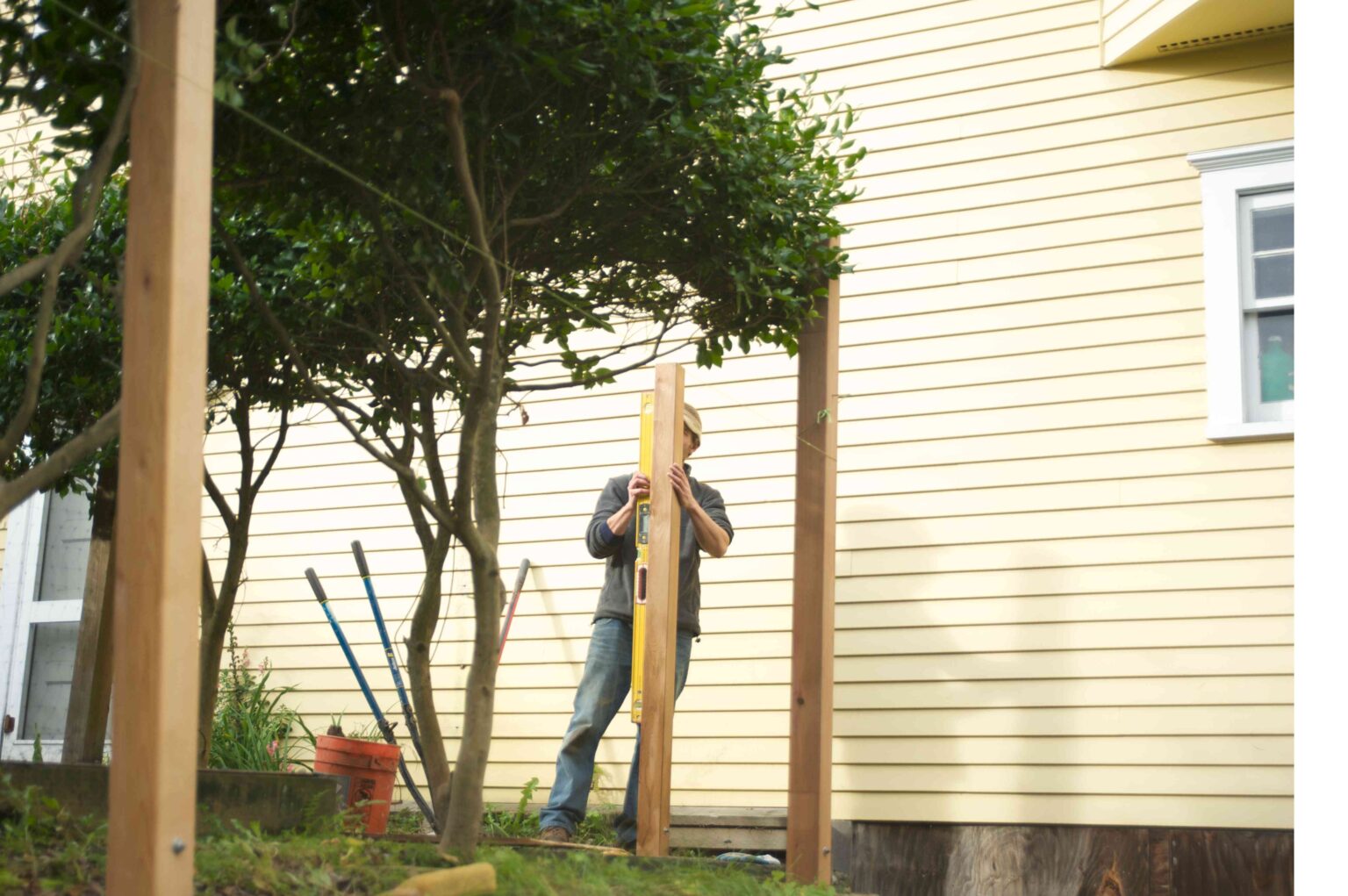The term plumb can be used as a verb to describe the activity of a plumber running water supply and drain pipes in a building, but the more important use of the term comes in the context of general construction or carpentry.
What Is Plumb?
In construction or carpentry, the term plumb refers to a line or feature that is perfectly vertical. In technical design, it represents an imaginary line that runs straight to the center of the earth. Plumb is the counterpart to level, which means to be perfectly horizontal.
As floors, countertops, and pool tables must be level, vertical elements such as columns, walls, and uprights must be plumbed for proper construction and load-bearing capacity.
The Meanings of Plumb
For architects, builders, and carpenters, plumb can be used as a verb, an adverb—or even a noun. It’s an adjective when it describes something that is perfectly vertical: “The wall is plumb.” It’s a verb when it identifies the action of making something plumb: “You must plumb the post before pouring the footing.” It’s an adverb that is used, such as “Check the fence for plumb.”
Finally, plumb also serves as a noun when it describes the small pointed weight that hangs at the bottom of a plumb bob—the simple tool used to mark or check for plumb.
The Importance of Plumb
In construction, a framing member or wall is installed so it is perfectly vertical or plumb and will transfer its supporting load directly downward (compression stress), giving it maximum load-bearing capacity. By contrast, if vertical elements are not installed precisely plumb, some weight is off-center and can apply considerable additional stress (shear load) to the member. Wood studs, concrete pillars, steel beams: All these materials have much greater compression strength than shear strength, hence the importance of structural members being plumb. The enormous load-bearing steel beams installed perfectly plumb, experiencing compression rather than sheer load, keep massive skyscrapers upright. A few degrees out of plumb and entire buildings can come toppling down.
How to Check for Plumb
The traditional tools for determining plumb are the plumb bob and the carpenter’s level. If you’re working from a line or surface that is verifiably level, you can also easily set something plumb by squaring off the level plane using a square. Builders today often use laser levels to project plumb lines of light onto surfaces or building elements.
The plumb bob is the oldest, simplest, and still one of the best tools for establishing plumb. It consists of a weight (the plumb) hanging at the end of a strong string. The weight is always shaped symmetrically so it hangs evenly, and it often comes to a point to allow accurate reading and marking. The user suspends the weight from the string at a fixed point. Gravity pulls the string taut, and when the weight is perfectly still and no longer swinging, the line created by the string is plumb, every time.
Often, it takes two people to use a plumb bob. For example, one person might hold the string up to a mark on the ceiling or the bottom of the beam and suspend the plumb just above the floor. The other person steadies the plumb and lets it rest, then marks the floor just below the point of the plumb. This way, the marks on the floor and the ceiling (or beam) are perfectly aligned and create an imaginary plumb line.
Checking posts, walls, and other vertical structures for plumb is usually done with a carpenter’s level, sometimes called a spirit level. Most levels have two liquid-filled vials near each end, and you can check for plumb by looking at either vial. When the bubble in the plumb vial is perfectly centered within the vial, the vertical member or structure is perfectly plumb. Levels come in many lengths, from short nine-inch torpedo levels to four-foot-long mason’s levels. Digital levels are even available for easier reading.
Plumbing Posts
When checking a post or column for plumb, use the level on two adjacent sides of the post (or one-quarter of the way around a cylindrical column). This is because a post can be plumb from left to right without being plumb from front to back. For this reason, there’s a handy tool for checking square fence posts or deck posts. Called a post level, this simple tool has a right-angle frame with level and plumb vials on the two adjacent sides of the frame. It also has a strap for securing the tool to a wood post and magnets for holding it to metal posts. When attached to the post, the post level is hands-free and allows you to check both sides of the post for plumb at a glance without the need to move the level.
Read the full article here

